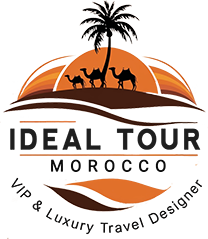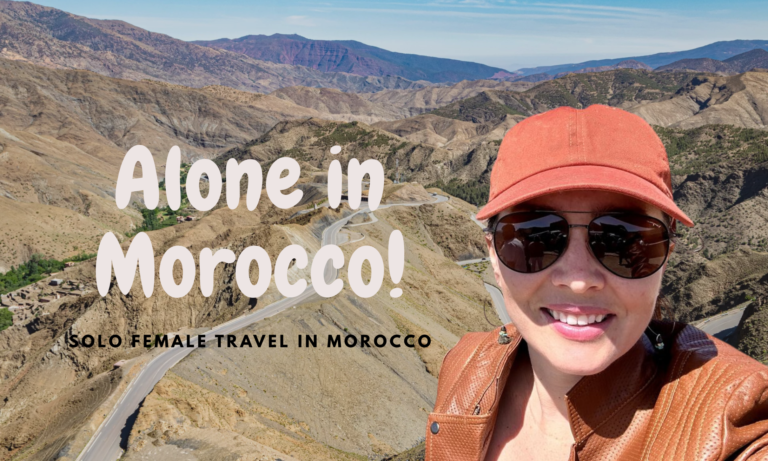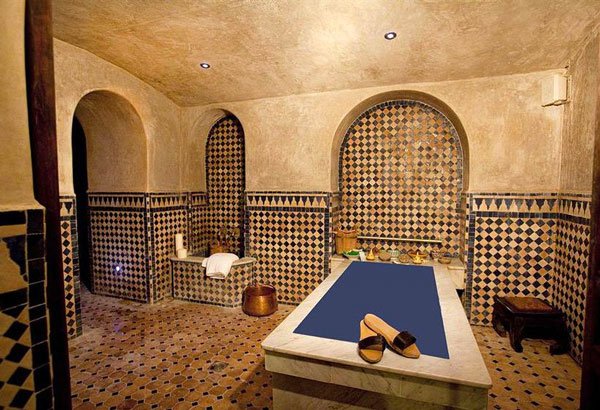
HomeBlogMorocco Travel GuideMoroccan Sahara Desert: Location, Animals, and Facts
Moroccan Sahara Desert: Location, Animals, and Facts
Stretching across the southeastern expanse of Morocco, the Moroccan Sahara Desert is a mesmerizing landscape of golden dunes, star-studded skies, and ancient […]
Stretching across the southeastern expanse of Morocco, the Moroccan Sahara Desert is a mesmerizing landscape of golden dunes, star-studded skies, and ancient nomadic traditions. As part of the greater Sahara, the world’s largest hot desert, this Moroccan segment offers a unique blend of raw natural beauty, rich culture, and immersive experiences that captivate travelers from around the globe.
Unlike other desert destinations that may offer only scenery, the Moroccan Sahara presents a living heritage. From camel treks through wind-sculpted dunes to nights spent in traditional Berber tents under the Milky Way, this region delivers a rare connection to nature and culture alike. Whether you’re seeking adventure, tranquility, or a deep dive into Morocco’s nomadic roots, the desert promises unforgettable memories.
In this blog, we’ll explore the location of the Moroccan Sahara Desert, its unique wildlife, the cultural significance of the area, and fascinating facts that make this destination stand out. Whether you’re planning a journey or simply curious about one of the world’s most iconic natural wonders, read on for everything you need to know.
Where is the Moroccan Sahara Desert Located?
The Moroccan Sahara Desert occupies a vast region in the southeastern part of Morocco, stretching along the border with Algeria. This region forms the western edge of the larger Sahara Desert, which spans eleven countries across North Africa. In Morocco, the desert begins just beyond the High Atlas Mountains, transitioning from rocky plateaus and oases into sprawling sand dunes and arid plains.
Key Geographical Features:
Borders:
East: Algeria
North: Atlas Mountains
South: Pre-Saharan and Saharan zones leading toward Mauritania
West: Hamada (rocky desert) transitioning to more arable land
Notable Desert Landscapes:
Erg Chebbi (near Merzouga): famous for its tall orange dunes
Erg Chigaga (near M’Hamid): more remote and less touristy, ideal for off-the-beaten-path travel
Draa Valley: an important palm-filled river valley cutting through the desert
Main Access Points
Travelers can access the Moroccan Sahara through several key gateways, each offering distinct entry points into different dune regions:
Merzouga – The most popular base for exploring the towering dunes of Erg Chebbi. Easily reachable from Errachidia, Fez, and Marrakech via road or guided tours.
Zagora – Known for its gateway sign reading “Timbuktu – 52 Days,” this town serves as an access point to the Draa Valley and nearby desert areas. Popular for shorter desert trips from Marrakech.
M’Hamid El Ghizlane – The last town before the vast, uninhabited Sahara begins. From here, travelers head toward Erg Chigaga, one of the most remote dune systems in Morocco.
Moroccan Sahara vs. the Greater Sahara
While the Moroccan Sahara is only a portion of the massive Sahara Desert, it holds a unique identity:
Accessibility: Morocco’s infrastructure and tourism industry make it one of the easiest places to experience the Sahara without venturing into more politically unstable regions.
Cultural Layer: The presence of Berber, Arab, and Tuareg communities enriches the desert with music, cuisine, art, and nomadic traditions.
Landscapes: Unlike the endless sand seas found in places like Algeria or Libya, Morocco’s Sahara includes a mix of ergs (dunes), hamadas (rocky plateaus), and oases.
Whether you’re watching the sunrise over the Erg Chebbi dunes or exploring an ancient ksar near Zagora, the Moroccan Sahara offers a diverse and safe way to explore this legendary desert ecosystem.
Famous Regions and Dunes in the Moroccan Sahara
When travelers dream of the Sahara Desert, they often envision vast, golden sandscapes stretching endlessly beneath a fiery sunset. Morocco offers several gateways into this dreamlike world, each with its own distinct terrain, vibe, and accessibility. Let’s explore the most famous regions and dunes of the Moroccan Sahara: Erg Chebbi, Erg Chigaga, and the Zagora Desert.
Erg Chebbi – Towering Golden Dunes near Merzouga
Erg Chebbi is arguably the most iconic and accessible desert destination in Morocco. Located near the village of Merzouga, this mesmerizing sea of dunes rises up to 150 meters high and stretches for over 28 kilometers. The dunes shimmer in hues of amber and gold, especially at sunrise and sunset, a photographer’s paradise.
Activities: Camel trekking, luxury desert camps, sandboarding, ATV rides.
Accessibility: Easily reachable from major cities like Fez and Marrakech with paved roads and organized tours.
Atmosphere: Popular and well-developed for tourism, offering a mix of traditional Berber hospitality and modern amenities.
If you’re looking for a comfortable and visually stunning introduction to the Sahara, Erg Chebbi is a top pick.
Erg Chigaga – Remote Majesty near M’Hamid
Located further south near the last oasis town of M’Hamid El Ghizlane, Erg Chigaga offers a rawer, more remote desert experience. These dunes are even more expansive than Erg Chebbi, yet far less visited due to their challenging access, you’ll need a 4×4 and an adventurous spirit.
Activities: Nomadic desert camps, camel rides, stargazing, trekking.
Accessibility: Reachable only by off-road vehicles; the journey itself is part of the adventure.
Atmosphere: Untouched, serene, and authentic — ideal for travelers seeking solitude and immersion in nature.
Erg Chigaga is perfect for those who want to disconnect from the modern world and experience the Sahara in its purest form.
Zagora Desert – Rocky Landscapes and Palm Groves
Unlike the classic rolling sand dunes of Erg Chebbi and Chigaga, the Zagora Desert offers a more varied terrain of rocky plateaus, dry riverbeds, and scattered palm groves. It lies on the edge of the Sahara and is often chosen by travelers with limited time who want a quick desert glimpse.
Activities: Palm grove walks, visits to kasbahs and ksars, camel rides.
Accessibility: Easily accessible from Marrakech within a day’s drive.
Atmosphere: Less dramatic in landscape but culturally rich, with historic caravan routes and desert towns.
Zagora is ideal for those interested in historical desert life rather than dramatic dunes.
Touristy vs. Off-the-Beaten-Path: Which Desert Experience is Right for You?
| Aspect | Erg Chebbi (Touristy) | Erg Chigaga (Off-the-Beaten-Path) |
|---|---|---|
| Accessibility | Easy – paved roads, tours from major cities | Difficult – requires 4×4 and off-road travel |
| Crowds | More tourists, popular camps | Very few visitors, more solitude |
| Accommodation | Luxurious desert camps, hotels nearby | Basic or eco-friendly camps, nomadic tents |
| Activities | Sandboarding, camel rides, quad biking | Stargazing, camel trekking, nature immersion |
| Ideal For | First-timers, families, photo enthusiasts | Adventurers, nature lovers, peace seekers |
Both regions offer unforgettable memories, but your choice depends on the type of experience you’re seeking. Do you prefer the comfort and accessibility of Erg Chebbi or the untouched wilderness of Erg Chigaga? Perhaps a stop in the Zagora Desert can give you a taste of both worlds — the history of the desert and the transition into the vast Sahara beyond.
Human Life in the Moroccan Sahara
Despite its unforgiving climate, the Moroccan Sahara is home to a vibrant human presence rooted in ancient traditions and shaped by the desert’s rhythm.
Indigenous Amazigh (Berber) Nomadic Tribes
At the heart of the Sahara’s human story are the Amazigh people, often referred to as Berbers, who have lived in North Africa for millennia. In the desert, nomadic Amazigh tribes such as the Aït Atta have historically roamed vast areas with their herds, following seasonal water sources and pasturelands. Their knowledge of the desert’s geography, weather patterns, and natural resources is passed down through generations and remains unmatched.
These nomads speak Tamazight dialects, wear distinctive traditional clothing like tagelmusts (face scarves) and djellabas, and maintain strong clan ties. Although many have transitioned to more sedentary lifestyles due to modernization, some families still practice transhumance, moving between different grazing grounds based on the season.

Traditional Saharan Lifestyle: Tents, Camels, and Oral Storytelling
The traditional life of Saharan nomads is shaped by simplicity, resilience, and deep cultural heritage:
Tents (Khaimas): Made of woven goat or camel hair, these portable homes protect against both the sun and cold desert nights. The interiors are often adorned with colorful carpets and cushions.
Camels: The “ships of the desert” are vital for transport, trade, and milk. Each camel is a prized possession, often passed down through generations.
Oral Storytelling: With no written tradition in early nomadic cultures, oral storytelling, poetry, and music have been central to preserving history, values, and wisdom. Evenings around a fire are often filled with tales of desert spirits, ancient battles, and love stories passed from elders to youth.
Festivals and Cultural Events
Modern Saharan life beautifully blends heritage with celebration. One of the most significant events is the:
International Nomads Festival (Festival International des Nomades) – M’Hamid El Ghizlane:
Held annually in March, this unique event celebrates nomadic culture through music, art, dance, traditional sports, and debates on environmental and cultural issues. It draws artists and tribes from across Africa and the world, creating a vibrant showcase of desert life.
Other cultural highlights include local moussem (spiritual festivals), wedding ceremonies, and camel races, often taking place in remote villages or during special gatherings.
Modern Settlements: Small Desert Villages and Towns
While the nomadic lifestyle is fading, modern desert communities continue to thrive in oases and near key transport routes. Towns such as Zagora, Rissani, M’Hamid El Ghizlane, Merzouga, act as gateways to the deep Sahara. These settlements maintain mud-brick architecture, community markets, and kasbahs (fortified homes), while also offering modern services like guesthouses, schools, and local cooperatives.
The daily rhythm remains connected to the desert: people rise early, rest during the hottest hours, and socialize at sunset. Traditional trades such as weaving, pottery, leatherwork, and date farming continue to provide livelihoods, especially for women in local artisan cooperatives.
Activities for Travelers in the Moroccan Sahara
A trip to the Moroccan Sahara is much more than sightseeing, it’s an immersion into a landscape of adventure, serenity, and ancient culture. Whether you’re a thrill-seeker, a romantic, or a culture lover, the desert offers unforgettable experiences.
Camel Trekking Through Dunes
Perhaps the most iconic activity in the Moroccan Sahara is the camel trek. These guided journeys, often starting from Merzouga or M’Hamid, allow travelers to:
Traverse majestic sand dunes such as Erg Chebbi or Erg Chigaga.
Experience slow travel, mirroring ancient trade caravans.
Learn about the art of camel handling from experienced guides, often from Amazigh backgrounds.
Trekking options range from short rides to multi-day excursions, with meals and camping under the stars.

Overnight Stays in Desert Camps
Spending a night in the Moroccan Sahara is a truly magical and humbling experience. As the sun sets behind the rolling dunes, the desert transforms into a realm of deep silence and breathtaking beauty. Travelers can choose from a range of desert camps that cater to different preferences. For those looking for comfort and indulgence, luxury camps provide ensuite tents with real beds, private bathrooms, and gourmet meals. These upscale experiences often include traditional Berber music performances under the stars and refined touches like sunset drinks on the dunes. On the other hand, authentic nomadic camps offer a more minimalist and immersive atmosphere, using simple bedding, shared facilities, and the guidance of local Amazigh hosts who introduce guests to traditional desert living.
No matter the level of luxury, most desert camps share a common rhythm that brings people together. After nightfall, guests typically gather around the campfire for a warm meal, followed by drum circles, Berber tea ceremonies, and storytelling sessions that reflect the rich oral traditions of the Sahara. With virtually no light pollution, the night sky reveals an awe-inspiring display of stars—the Milky Way stretching clearly overhead, shooting stars flickering across the darkness, and a silence so profound it seems to echo. Sleeping in the desert is not just about resting; it’s about connecting deeply with nature, culture, and the timeless spirit of the dunes.
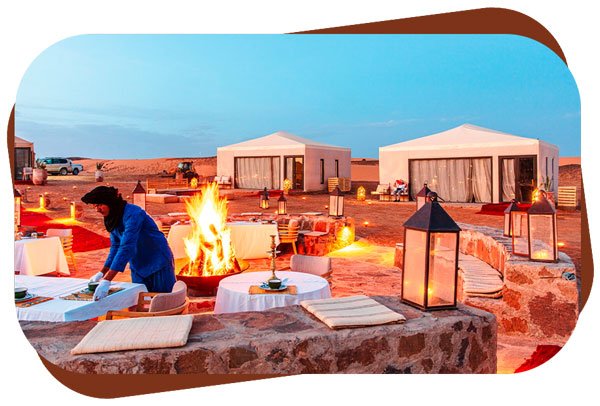
Sandboarding, 4×4 Dune Adventures
For thrill-seekers, the Sahara is your playground.
Sandboarding: Slide down golden dunes on a board—no snow needed! Erg Chebbi and Erg Chigaga are perfect spots for this adrenaline rush.
4×4 Excursions: Guided off-road trips in Land Cruisers offer access to remote dunes, fossil beds, ancient rock carvings, and nomadic camps. These tours provide both action and insight into desert geology and history.
Some tours also combine visits to lost ksars, dried river valleys, and former caravan routes.
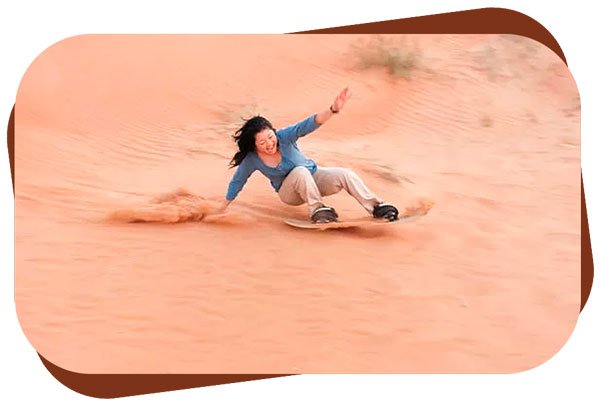
Stargazing: Best Time and Places for Night Sky Views
The Moroccan Sahara is one of the best places on Earth for stargazing. With zero light pollution, clear skies, and low humidity, you’ll witness:
The Milky Way stretching across the horizon
Meteor showers, especially during August (Perseids) and December (Geminids)
Planets, constellations, and the occasional satellite trail
Best stargazing spots:
Erg Chebbi near Merzouga
Erg Chigaga near M’Hamid
Dunes outside Zagora
Tips: Bring a telescope if you can, or join astronomy-focused desert camps for guided celestial tours.
Visiting Ancient Ksars and Oasis Towns
No Sahara journey is complete without discovering its rich architectural and cultural heritage. Highlights include:
Ksar of Ait Ben Haddou (UNESCO World Heritage Site): A stunning fortified village used in many films. It lies near the edge of the desert and offers insight into mud-brick architecture and desert defense systems.
Oasis Towns: Places like Skoura, Tamegroute, and Foum Zguid reveal the beauty of irrigated palm groves, traditional pottery centers, and ancient manuscripts preserved in Saharan libraries.
Walking through these towns offers a glimpse into traditional agriculture, community water-sharing systems, and everyday desert life.
Interesting Facts About the Moroccan Sahara
The Moroccan Sahara is far more complex and intriguing than most people imagine. Beyond the iconic golden dunes lie fascinating geological wonders, ancient secrets, and environmental challenges. Here are some captivating facts that reveal the deeper layers of this extraordinary desert landscape:
1. It’s Not All Sand – A Diverse Terrain Awaits
Contrary to popular belief, the Moroccan Sahara is not entirely covered in sand. While dramatic dunes like those in Erg Chebbi and Erg Chigaga are iconic, large portions of the desert are composed of hamadas (rocky plateaus), reg (stony plains), mountain ridges, and dry riverbeds called wadis. This varied terrain provides a striking contrast in scenery and makes the desert experience all the more diverse and adventurous.
2. The Word “Sahara” Comes from Arabic
The name “Sahara” is derived from the Arabic word “ṣaḥrāʾ (صحراء),” which literally means “desert.” Interestingly, saying “Sahara Desert” is somewhat redundant—it’s essentially saying “Desert Desert.” Despite this linguistic quirk, the name has become synonymous worldwide with endless arid expanses and extreme heat.
3. The Desert Holds Fossils of Ancient Marine Life
Believe it or not, parts of the Sahara—including areas within Morocco—were once covered by a vast ocean millions of years ago. Today, these prehistoric seabeds have left behind marine fossils, including ammonites, orthoceras, and even dinosaur bones. In regions like Tafilalt and Erfoud, fossil hunting is a thriving industry, and many travelers visit local workshops to see or buy beautifully polished fossil stones.
4. Extreme Temperature Swings: Scorching Days, Freezing Nights
The Moroccan Sahara is notorious for its dramatic temperature changes. During the daytime in peak summer, temperatures can soar above 45°C (113°F), making midday travel grueling. But once the sun sets, the heat dissipates rapidly. Nighttime temperatures can plunge to 0°C (32°F) or even lower during the winter months. Packing both light and warm clothing is essential for anyone spending a night in the desert.
5. The Sahara is Expanding Due to Climate Change
The Sahara Desert, including its Moroccan segment, is gradually expanding southward due to climate change and desertification. Studies show that human activity, such as overgrazing and deforestation, combined with natural cycles, has caused the desert to grow in size over the past century. This shift poses challenges for ecosystems, agriculture, and communities that live on the desert’s edge.
Best Time to Visit the Moroccan Sahara
Planning the perfect desert adventure begins with choosing the right time of year. The Moroccan Sahara is a land of extremes, so timing your trip wisely ensures a safer and more enjoyable experience.
🌤️ Ideal Months: October to April
The best time to visit the Moroccan Sahara Desert is between October and April. During these cooler months, daytime temperatures are more pleasant, typically ranging between 20°C to 30°C (68°F to 86°F), making it ideal for camel trekking, dune hikes, and stargazing without the risk of heat exhaustion.
Winter (December–February) can bring chilly nights, often nearing freezing, but the daytime remains sunny and comfortable. Many desert camps provide cozy blankets and even heated tents to ensure a warm night’s sleep.
☀️ Avoiding Summer Heat: June to August
June to August is the hottest time of year, with temperatures often soaring above 45°C (113°F) in the daytime. This intense heat makes outdoor activities difficult and sometimes dangerous, especially for children or elderly travelers. If you must visit during summer, opt for early morning or late afternoon excursions and choose camps with shaded lounging areas.
Events and Festivals
Peak travel seasons (fall and spring) often coincide with vibrant local events and cultural festivals:
Merzouga International Music Festival – Celebrates Saharan music and nomadic traditions with performances by Berber and Tuareg artists.
Erfoud Date Festival (October) – A colorful event that showcases one of the region’s most important crops, with markets, music, and camel races.
These festivals provide a great opportunity to connect with local culture and deepen your desert experience.
Sustainable and Ethical Travel in the Sahara
Exploring the Moroccan Sahara is a dream for many, but doing so ethically and sustainably ensures this fragile environment and its people continue to thrive.
Respecting Desert Wildlife and Ecosystems
The desert may look barren, but it’s home to a surprising variety of life, from fennec foxes and scarab beetles to rare plants and migratory birds. Stick to marked paths, avoid picking desert flora, and refrain from disturbing animals you may encounter, especially during night walks.
Supporting Local Guides and Nomadic Communities
Hiring local Berber or nomadic guides not only provides a more authentic and insightful experience but also directly benefits the communities that call the Sahara home. Many guides are descendants of desert tribes and offer unique perspectives on survival, heritage, and desert lore.
Ethical Camel Tours
Camels are iconic symbols of the Sahara, but not all camel tours are conducted humanely. Choose operators who:
Use well-cared-for camels with padded saddles.
Allow frequent rest and water breaks.
Limit camel workloads, especially in extreme heat.
Responsible camel treks are not just more ethical—they’re more enjoyable and memorable, too.
Eco-Friendly Camps and Low-Impact Travel
More desert camps are adopting sustainable practices, such as:
Solar-powered lighting and water heaters.
Composting toilets and minimal plastic use.
Locally sourced meals and fair-trade products.
Choose eco-camps that are committed to reducing their environmental footprint and prioritizing the well-being of their staff and animals.
Essential Packing Tips for the Desert
Packing for the Moroccan Sahara requires careful planning to stay comfortable, safe, and prepared for dramatic shifts in temperature and terrain.
What to Wear
Lightweight, breathable layers for daytime (cotton or linen recommended).
Long sleeves and pants to protect from the sun and sand.
Warm fleece or thermal wear for cold nights.
A headscarf or shemagh to shield your face from the sun and dust.
Sunglasses with UV protection.
Must-Bring Items
Sunscreen (SPF 30+), lip balm with SPF.
Reusable water bottle (stay hydrated!).
Flashlight or headlamp (essential for desert nights).
Camera or smartphone for sunrise, sunset, and stargazing shots.
Small backpack or daypack for treks and excursions.
Moisturizer and wet wipes, as desert air is extremely dry.
Footwear Suggestions
Closed hiking shoes or boots for rocky and uneven areas.
Sandals or slip-ons for relaxing at the camp.
Socks to protect feet from hot sand during camel rides.
Bonus tip: Carry a lightweight blanket or shawl, which can double as extra warmth or a picnic mat during your adventure.
Conclusion
The Moroccan Sahara Desert is more than just a destination, it’s a soul-stirring journey into nature, tradition, and timeless beauty. From majestic dunes that shift with the wind to the warm hospitality of desert communities, this region offers a unique and transformative travel experience.
For first-time travelers, here are a few quick tips:
Don’t underestimate the desert cold—pack warm layers.
Book with reputable local guides or eco-tours to ensure a safe and ethical experience.
Leave no trace—respect the environment and avoid littering.
Be open to slow travel—sunsets, tea rituals, and starry skies are worth savoring.
By exploring the Moroccan Sahara responsibly, you not only protect this precious ecosystem but also contribute to the sustainable development of the communities that welcome you.
So, ready your scarf, charge your camera, and let the silence of the dunes speak to your spirit. The Moroccan Sahara is waiting to be discovered.
Frequently Asked Questions about the Moroccan Sahara Desert
1. How many days should you spend in the Moroccan Sahara Desert?
Most travelers spend 2 to 3 days in the Moroccan Sahara to enjoy a full desert experience. This typically includes:
Day 1: Arrival in Merzouga or M’Hamid, camel trek into the dunes, sunset views, overnight in a desert camp.
Day 2: Explore nearby dunes, oases, or nomadic villages; optional sandboarding or 4×4 tour.
Day 3: Return journey.
If you’re short on time, a 1-night stay in the desert is still memorable. However, for a deeper cultural and natural immersion, 3–4 days allow more exploration and rest between travel legs.
2. Can kids travel safely in the Moroccan Sahara?
Yes, families with children can safely visit the Moroccan Sahara, especially with guided tours. Many desert camps are family-friendly and offer:
Short camel rides are suitable for kids.
Evening storytelling, drumming, and stargazing.
Comfortable tents with private bathrooms (in luxury camps).
Precautions to consider:
Avoid extreme heat (travel between October and April).
Keep children hydrated and protected from the sun.
Choose camps that offer clean amenities and easy accessibility.
3. Are there luxury desert camps in the Moroccan Sahara?
Absolutely. The Moroccan Sahara offers a range of luxury desert camps, particularly near Erg Chebbi and Erg Chigaga dunes. These upscale options typically include:
Spacious, well-decorated tents with private bathrooms.
Gourmet Moroccan cuisine.
Solar-powered lighting and eco-friendly setups.
Personal guides and camel handlers.
Activities like yoga, guided hikes, or stargazing sessions.
Luxury desert camping allows you to experience the wild beauty of the Sahara without sacrificing comfort.
4. Is there Wi-Fi or mobile signal in the desert?
Mobile signal is available in some parts of the Moroccan Sahara, especially near major access points like Merzouga or Zagora. However:
Once deep into the dunes, coverage can be very limited or non-existent.
Most luxury camps offer limited Wi-Fi access powered by solar or satellite connections.
Standard or budget camps often do not provide Wi-Fi.
The desert is a great place to unplug and disconnect from the digital world — part of its magic is the silence and serenity.
5. What’s the difference between Erg Chebbi and Erg Chigaga?
Both Erg Chebbi and Erg Chigaga are iconic sand dune regions of the Moroccan Sahara, but they differ in accessibility and atmosphere:
Erg Chebbi:
Located near Merzouga.
Easier to access (paved roads).
Taller dunes (up to 150 meters).
More developed and tourist-friendly.
Erg Chigaga:
Located near M’Hamid.
More remote and wild (4×4 needed).
Less crowded, ideal for solitude seekers.
Slightly smaller dunes but more authentic desert ambiance.
Choose Erg Chebbi for comfort and convenience, or Erg Chigaga for a more adventurous, off-grid experience.
6. Is it safe to travel to the Moroccan Sahara Desert?
Yes, the Moroccan Sahara is generally safe for tourists, especially when traveling with a licensed tour guide or operator. Local communities are welcoming and tourism-focused.
Safety tips include:
Travel with a reputable guide or agency.
Stay hydrated and protect yourself from the sun.
Avoid solo travel deep into remote areas unless experienced.
Follow local advice on wildlife, especially at night.
Always check current travel advisories and weather forecasts, especially if traveling in summer months.
